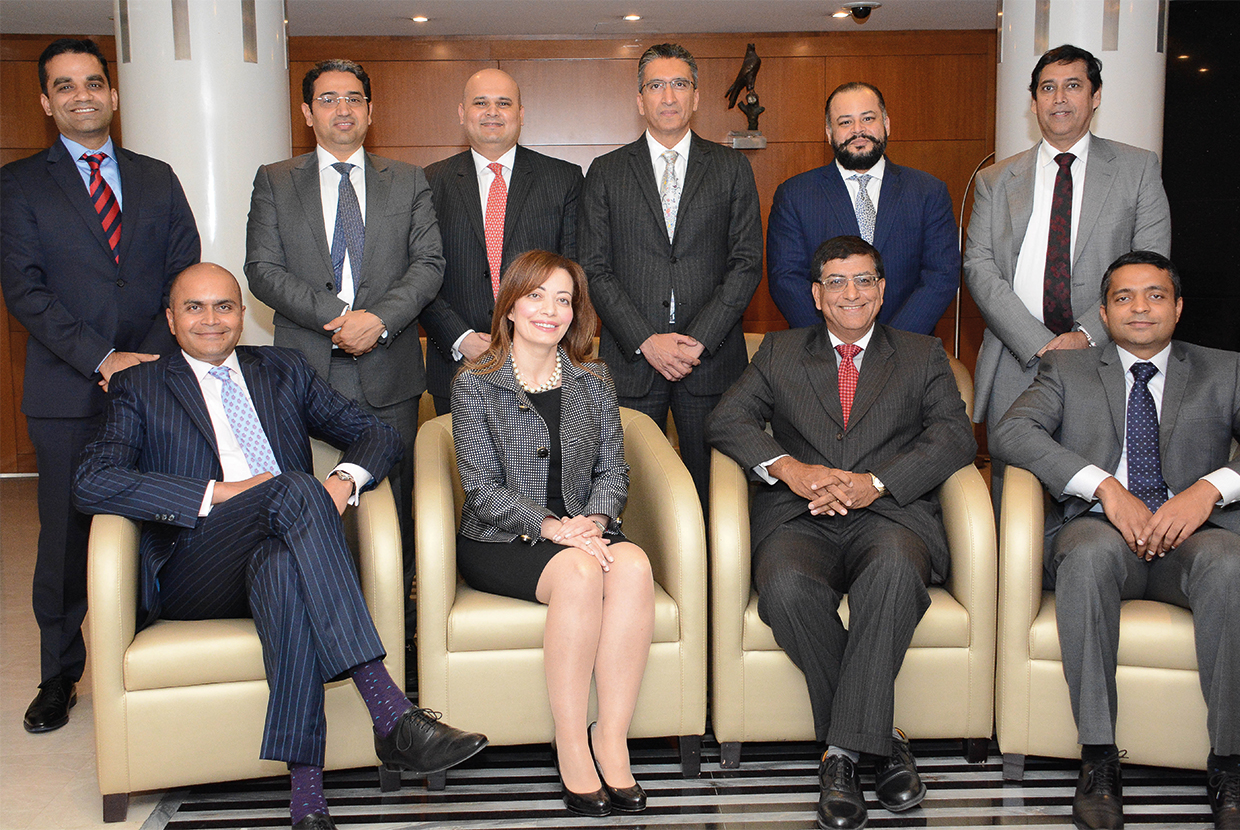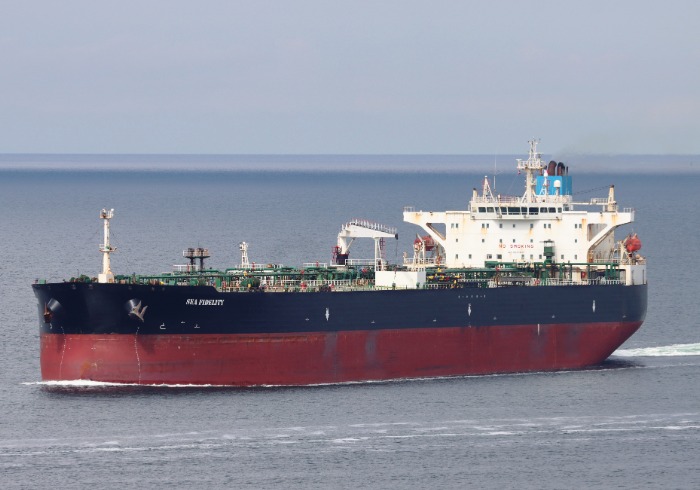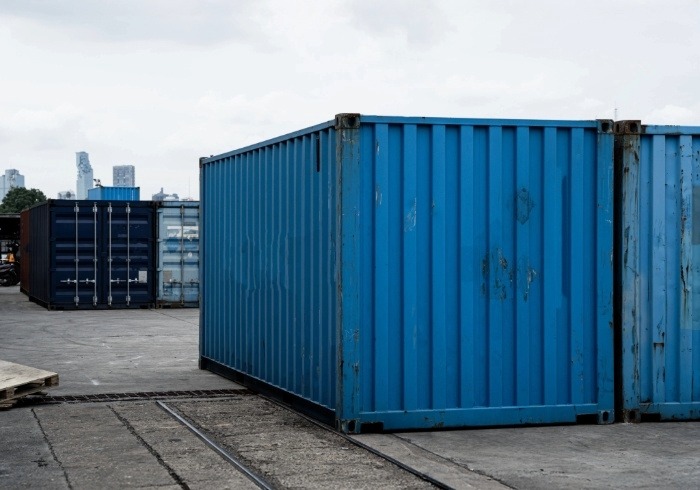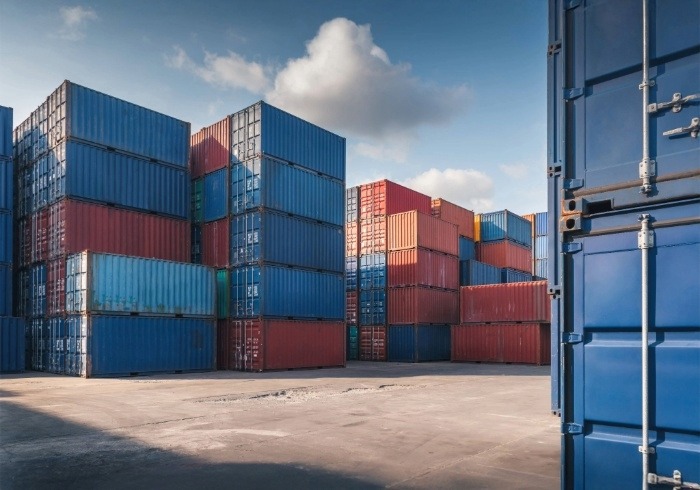The GTR Mena editorial board met recently in Dubai to discuss appetite for trade finance risk, and what banks in the region are doing – whether it be institutional mergers or increased dedication to digitalisation – to help their clients.
Roundtable participants
- Maninder Bhandari, director, Derby Group (chair)
- Anith Daniel, head of sales, transaction banking services, Emirates NBD
- Haytham El Maayergi, global head of transaction banking, Abu Dhabi Islamic Bank
- Rahul Jayakar, head of global transaction services – products and trade, Mashreq
- Yusuf Ali Khan, managing director, head of trade for Middle East, North Africa, Turkey & Pakistan, Citi
- Kersi Patel, regional head of trade finance, Middle East and North Africa, MUFG
- Arup Roy, head of global transaction banking, Saudi British Bank (SABB)
- Saurabh Sharma, trade finance sales, Abu Dhabi Commercial Bank (ADCB)
- Nadya Talhouni, global head of cash management and trade finance, Arab Bank
- Sunil Veetil, regional head of global trade and receivables finance for the Middle East, North Africa and Turkey, HSBC
Bhandari: There is the old adage that good companies don’t go bust; they just run out of cash. In the UAE, the SMEs are crying foul. They say that liquidity is low and trade finance facility availability is low. The risk perception has changed. Everybody feels as if the risk appetite of institutions has lowered, the perceived risk is much higher, and therefore people are not coming forward to facilitate trade. Is this the case?
Talhouni: Liquidity has indeed tightened across the Mena region, as a reflection of the regional economic slowdown. Tight liquidity and rising interest rates affect SMEs, though it is important to remember that these factors affect other firms as well. Moreover, some SMEs in certain sectors are managing the situation relatively well, and some are even thriving.
Bhandari: Have banks withdrawn because they don’t have the funding capability or they don’t want to take the additional risk?
Patel: A good way to look at this issue would be to start from the global picture. The economic story of this region is still largely revolving around exporting oil and gas. If you look at where the oil prices are, even if they have recovered close to 100% from their recent lows in early 2016, they are still roughly 50% below where they were at their peaks in mid-2014. Therefore, the incoming cashflows at the government level have reduced by half over the last few years. Just over 2015 and 2016 the fiscal deficit in the GCC region is expected to cross US$300bn. This position has meant that the GCC governments have had to rationalise their investments into more productive assets, reduce subsidies, repatriate global investments, look at improving efficiencies, and consider extending payment terms. The effects of these actions have percolated down the economies of the region all the way to the SMEs.
Even with these measures, the loan growth is still positive and outstripping deposit growth, resulting in lower US dollar/hard currency liquidity and higher cost for the same. Therefore more than risk only, reducing liquidity in the system has introduced a level of stress which has resulted in the better credits becoming diluted to the extent that some of the banks cannot support them any longer.
El Maayergi: My feeling is that this is not really a trade issue but trade could have solved it. The liquidity situation is such that for large companies, they can hold on while the going is bad, but for the smaller players below them, when payments are delayed they go out of business. Banks might still have liquidity for the big players, but there is a risk for the SMEs.
Bhandari: Has trade finance support via available liquidity also come down?
Khan: From a Citi perspective, over the last three or four years, banks have focused on what types of risks they want to take and further refined and defined their target market with some banks exiting completely from countries and sectors in the region. Previously, some banks were taking a lot of exposure on the SME sector, but have now reduced that exposure significantly given the stress there. This has also led to a redeployment of that liquidity, and there is more money chasing fewer opportunities, which in turn is driving prices down. In the GCC, the liquidity situation is compounded as we have the big local banks and the international banks, as well as new entrants from Asia all trying to win market share.
Bhandari: Despite this, we hear that the market has slowed down or is in a state of withdrawal as far as the financial sector is concerned. There’s a different message in there. Is there consistency?
Veetil: There is a gap. There is a void left by people not financing the SMEs. What is going to happen is that the pricing is going to go up. The liquidity premium is going up, and the new entrants are not going to come cheap. They are taking a big risk, so obviously they are going to price it accordingly, which is again detrimental to the SMEs.
Bhandari: But the strategy followed by some is very focused. They will not go into markets which do not give them a premium for a risk to return.
Jayakar: SMEs are very important contributors to the economy; in Mena the contribution of SME to GDP ranges from 35% to 45%. The statistics also mean that this is an important segment that banks cannot ignore. I wouldn’t say that the strategy is focused, but the years of experience and downturns have highlighted certain risks that need to be mitigated by putting controls in place. So, clients which are not able to demonstrate their business transactions transparently will face an issue. The granular level of due diligence is a new reality, which may have not been the case four to five years back.
Due diligence is not a cost; it’s an investment to do business; it’s the new normal. Banks need to innovate, keeping the client in focus and finding ways to do incremental business in the same environment.
Bhandari: Why is the market then not moving collectively towards providing such products which can cater to the investment risk appetite? We have been talking about structured trade finance for years, for example, yet the uptake on that is still not there.
Daniel: To summarise, there is a trust deficit in the market. Whether it is banks or whether it is clients selling to their buyers or buying from their suppliers, there is hesitation in looking at open account credit.
Banks today spend a lot of time in assessing the genuineness of the underlying transaction. As a result, there is hesitation internally to look at trade finance, given the experience over the past two years. Even the insurance markets have drastically reduced lines across various sectors. Structured products are the way forward in terms of mitigating some of those risks but it needs better support in terms of regulatory framework, for example charge over receivables or movable assets, and alignment across banks.
Bhandari: So there is a perception that bigger clients are better clients at this point in time?
Daniel: During 2015/16 banks have taken hits due to fraudulent transactions and/or cases where clients have run away from the market. A fair share of these losses are within the SME market. As a result, most credit underwriters have taken a cautious approach in terms of pulling away from various sectors such as trading, commodities or expat lending. Preference is for secured lending backed by tangible security in the form of mortgages.
It is easier for underwriters to deal with bigger clients primarily due to availability of information, access to promoter capital and access to better security structures. Hence there is a perception that bigger clients are better at this point in time.
For trade financing, anything involving trade finance and especially third-party trade is looked at negatively for smaller clients due to doubts on quality of information, genuineness of transaction and lack of tangible security. While some of these issues can be mitigated through structured products which ring-fence the entire trade cycle, this still requires some development in terms of regulatory framework and building the necessary product suites across banks.
Bhandari: Is the same true in Saudi Arabia or surrounding markets?
Roy: Saudi Arabia has been passing through the liquidity constraint for the past couple of years, but before that, were the banks extending the right quantum of facilities to the SMEs? Perhaps not. There is, however, a growing realisation in Saudi Arabia that the ecosystem must work collectively to have a viable solution for the SMEs, which includes banks, insurance companies, regulators, the government, and the large corporates who are sourcing from the SMEs. The government is also increasingly asking banks and large corporates to look after their SME suppliers.
Bhandari: Let’s look at the macro market in totality, without the SMEs. If legislation changes to be more protective, will the financial landscape change?
Sharma: With legislative regime changes, it should facilitate the recovery rates, and tame the rush to exit among creditors. This can also encourage debtors to be proactive, to work with their bankers to address the need for any change in business model or any financial or cash flow difficulties.
Bhandari: Are bank mergers the answer to taking more risk?
Khan: That depends on the landscape. There is a big merger which is reaching its completion now in the UAE and it’s going to have a major impact not just in the UAE, but broadly in the region. If you look outside the UAE, there are bigger markets that remain overbanked and they are markets where international players have exited, which has created space for local banks to grow. As more governments move towards greater liberalisation, the trend that we have seen in the UAE is going to be set to continue.
Patel: The answer to an extent is beyond just the banking environment, and we have seen similar activity in other sectors too. Local governments are large shareholders in multiple banks in their respective countries, and bank mergers are answering the need to rationalise investments and seeing how best the organisations can address the current business opportunities in the most cost-efficient way. Besides creating a regional market leader with 25% loan market share in the UAE and significant global presence across 19 countries, the banking merger in the UAE is expected to save close to US$150mn in combined operating expenses. Once critical experience is gained in this endeavour, I believe it is reasonable to expect that we will see similar activities in various sectors of the economies where the local governments hold substantial investments.
Jayakar: Competition in the UAE is strong; we have seen a merger and some leading foreign banks consolidate their position in the last 12 month or more. If one looks at some of the other markets in the GCC, they are dominated by three or four banks, or even fewer. In such markets, the consolidation of smaller banks may strengthen them. The final objective is that the market should be able to financially include all customers and yet not be overbanked.
Bhandari: In Saudi, the institutions have not taken the bold step of going into other markets as fast as perhaps they should or could have. They have remained contained in their domestic markets. Is that a true statement?
Roy: I tend to agree. There was so much happening in Saudi, until the fall in oil prices, that banks have not had to look at overseas markets. The situation has changed and we may see Saudi banks exploring business opportunities in certain key geographies by leveraging their proven Islamic banking capabilities.
Jayakar: There are regional banks that are going out, and Mashreq is a prime example of that. Mashreq’s geographic footprint and focus is entirely consistent with the UAE’s role of being at the centre of Asian, Middle Eastern and African trade.
Large local banks often first embark on growing their presence in the region, with similarities in these markets being the underlying strategy. UAE-based banks may be in a relatively advantageous position because the corporates they cater to already have a footprint in the region: most of the regional treasuries are based in the UAE.
Veetil: If the corporates expand, the banks tend to expand with them as well.
Bhandari: What I’m alluding more to is financial institutions establishing a franchise in a market without following their corporates.
Veetil: Even if you look at foreign banks, they tend to follow their corporates. When the Middle Eastern corporates start expanding, I am sure the banks will follow them as well.
Khan: In the age of digitisation, it may not necessarily be that you need to have bricks and mortar on the ground.
Daniel: Emirates NBD has a two-pronged strategy of expanding beyond following corporates. One is following the corporates into new markets. The other one is about following the trade cycle, especially around the south-south trade corridor from Africa and Mena to the Southeast Asia region. The UAE is a hub for trading, with excellent infrastructure and benefits of taxation. Over the years, many companies have set up their regional offices in the UAE that service the trade corridor between Africa to Southeast Asia. It is important to have a good mix of brick and mortar in strategic markets, which is essential for local market knowledge, combined with digitisation to derive full benefits.
Bhandari: Would boutique, singularly-focused banks then be the answer?
Daniel: There are some banks in India who are doing only trade and commodity finance and they are very niche in to what they do and they don’t want to do anything else. Each market is unique and it may not be easy to be amongst the top five banks in each market we operate in. The answer lies in identifying strategic opportunities for each market and focussing our core strengths for the market to maximise benefits for our network.
Bhandari: As a result, are corporates better served by local or multinational banks?
Sharma: Increasingly, local banks are playing a bigger banking role in serving the MNCs’ banking needs. The regulatory cost, muted geographical risk appetite and derisking among global banks are a few factors that are pushing local banks to play a more active role in MNC banking.
El Maayergi: I think the playing field is levelling out now. For regional banks more than anything, between technology and partnership, you can act like a multinational bank. We’re more flexible as a local bank, and we feel there is no limitation to what we can do now because we can serve any place with partners, we can offer any product with technology, and I think the game now between regional banks and multinational banks is more how we can play together rather than how we can compete.
Patel: While local and global banks have their niche markets or customers in the region, clearly collaboration between them has been on the rise. The challenging business environment we face is an opportunity for us to collaborate, play to our strengths and create new solutions that generate unique value for our common customers. And, by working together, we can create unique value not only for our customers but also for the banks involved. We have an excellent example in 2016 where a regional carrier was not in a position to finance the purchase of an aircraft due to delays faced with the European ECAs, and MUFG collaborated with a local bank to create a unique solution to give them funding. This was a winning outcome for the carrier, our local banking partner and ourselves.
Jayakar: Local banks have a deep rooted experience of the local markets. They do not just bring in the higher level of understanding but also the flexibility to cater to the clients. For example, if we take technology as a differentiator, local banks often offer a level of customisation which, in general, global banks are constrained by because of platforms being standardised across locations.
Sharma: For MNC banks, the homogeneous central policies may not be that flexible in customising the solution to the client at the last mile.
Bhandari: Given that we are in the era of digitisation, could this reach to the last mile be made easier?
Daniel: Yes, on the cash side of the business. On the trade side of the business, it is still at a very early stage. While there are developments around blockchain, full digitisation in a commercially viable form will take more time. Trade is still document driven and this needs a push from everyone, including legislation and digitisation across customs and transportation logistics.
Khan: We have a specific drive at the moment. We divide our trade products. One is the flows business, the other one is the episodic business and I’m sure most of the other banks do it in some sort of similar manner. Now, on the episodic side, when it is trade finance, the ECA business, it’s going to be much more bespoke, credit intensive and documentation intensive. Digitisation would be more employable for the flows business where digitisation is being deployed for automation of letters of credit.
Patel: While the region has been slow on digitisation on the trade side, to an extent this pace was a reflection of the traditional flow trade solutions being widely used here to mitigate risks or raise liquidity with regard to the underlying trade flows. We are now seeing increasing interest in digitisation on the trade side, though this is not necessarily driven by the local players. To give an example, a Japanese automobile manufacturer has now started using the bank payment obligation (BPO) for its exports into the region, and its dealers in the region are slowly but surely moving down that path.
Bhandari: Will Saudi Arabia be further away or further ahead of anybody else as far as digitisation and digital banking is concerned?
Roy: From the documentary trade perspective, perhaps we are at par with most of the leading global or regional banks. Of late, Saudi clients are looking for an enhanced level of automation. We have recently launched guarantees issuance business for one of the large corporates through SwiftNet. Following this, all guarantee issuance, amendments and cancellations from this client have been digitised. There are various other initiatives such as Bolero which are being implemented for other clients.
The larger point here is that the slower level of digitalisation in trade, vis-à-vis other product lines such as cash management, to some extent, has resulted in trade’s true value or importance within banks being understated. We only talk trade revenue based on documents that we process, with a large part of non-documentary trade related revenue being booked as ‘non-trade’ revenue. A recent study in our bank revealed that about 30% of trade payments are being initiated through other electronic channels. It is therefore in our interest to accelerate the pace of digitalisation covering the entire financial supply chain so that we can offer holistic solutions to clients which in turn should help us in demonstrating the true value of trade both to clients as well as to banks.
Veetil: One good thing in the region is that a lot of this technology culture is driven by the government itself. They have a bigger influence and a bigger part to play in how corporates and banks behave when it comes to technology. Tomorrow, customs can turn around and say, I will only accept electronic documents. And suddenly, everyone has to do that.
Jayakar: Digitisation and blockchain has been spoken about in the same breath; digitisation, simply put, is anything that can convert manual into electronic, and blockchain can be the technology that can power digitisation. The key to any successful digital transformation is to identify the problem to be solved and the scalability of the solution. When it comes to the solution being rolled out by banks, we have seen that solutions which are typically bank-centric tend to be more successful; however, the proprietary nature may not lead to a digital revolution. Solutions that need the entire industry to become efficient need regulatory support, by which I mean both the global bodies in collaboration with local bodies, should set standards and guideline for participants to follow.
Talhouni: In the Levant, we see a strong and increasing uptake of digital and automated solutions across the corporate sector. While there is a lot of discussion surrounding the blockchain, its adoption is slow and would greatly be facilitated with a regulatory framework that creates common standards. It is important to recognise here that we have a younger generation of managers and customers, which demands connectivity, mobility, speed and reliability. Thus, we will see continued and broader increase in the adoption of digital solutions for a while.
Bhandari: If the entire ecosystem needs to move in the same direction, what impact do we expect from the retraction of global trade agreements?
Khan: Moving away from multilateralism towards bilateral agreements, I think that is where some of this is going. If we look at the agenda that President Trump ran ahead of the election, it was about more job creation in the US, which will come from the US’ ability to export goods and make those goods competitive. As such, they will need enablers who can show that the buyers buying those goods at the other end have access to funding structures that are competitive. And one of those structures, in the medium to long-term space, is support by US Exim. There have been some very positive noises coming out of the US about the reauthorisation of US Exim.
Patel: I expect that Trump’s focus will initially be on countries with which the US has major trade deficits: Germany, China, Japan and Mexico. In the UK, efforts are going to be focused on Europe in delivering a successful Brexit. In the Middle East, I think we are more or less going to be left untouched, at least for the moment. We don’t export too much to them and our imports are of substantial value, which is of benefit to both the UK and the US. If you look at our exports, we export less than 5% to the US, and less than 2% to the UK, so they are minor export markets for the key GCC economies. An interesting angle to consider is that China is a big trade partner for the Middle East region, and hence any US action against China may have an indirect impact on us, potentially positive rather than negative in my opinion.
Bhandari: Whatever is happening in parallel either politically, financially or whatever else, from a trade finance availability perspective, going forward will things be better for the corporates, the same or worse?
Daniel: I believe that things will remain the same in general. For the region and for the UAE in particular and for local banks who are moving on to IFRS 9 compliance, short-term trade finance may have higher appeal and net return given the lower cost of capital for trade financing. Competition across banks across trade financing might increase as a result. Overall, the outlook remains stable.
Sharma: We do not expect much change in trade finance availability to SMEs until towards the end of 2017 when the market may stabilise, further improving banks’ confidence in the sector.
Talhouni: I don’t see much change in terms of increases in volumes. I think the risk factor will continue to play a big role through the year. Liquidity did drop, but there is still liquidity, and, at the end of the day, banks’ appetite towards the types of risks that they are taking has changed and I expect that to continue throughout the year.
Khan: There will be pockets of growth and when banks look to service the corporates, two aspects will play a big role. One, how efficient can banks be in terms of some of the trade business; and two, the ability of banks to form partnerships. That will come in particular when we are talking about big infrastructure projects which will require significant balance sheet from banks.
El Maayergi: I think it will be better slowly from now because definitely the banks have had a period when everybody just closed the doors at one point, but now banks have relaxed and are starting to see that this industry has growth.
Patel: We used to say ‘lower for longer’ for oil prices, but I think now it looks more like lower forever. While we have the GCC/OPEC producers successfully collaborating with Russia and Iran to reduce the downside, in the past few years US shale producers have become increasing competitive and have lowered the potential upside. From this angle, balancing budgets for the GCC governments is going to be a three to four-year exercise – and during this time frame it is reasonable to expect that the current pressure on US dollar liquidity will continue, though the intensity of it should reduce gradually from now onwards.
Bhandari: Will non-oil trade simply increase to cater to the gap created by low oil prices?
Patel: Excluding Dubai, to a very large extent non-oil trade across the GCC is still dependent upon the larger oil price impact across the region, so clearly what happens on the oil prices is critical for our region. As the regional governments go through a three to four-year cycle to balance their budgets, I think there will be a time of stress for liquidity, especially hard currency. However, unlike during the financial crisis, there is enough global liquidity now and a good level of confidence in the industry. Therefore for corporates and businesses, including SMEs, where there is a clearly identified trade flow and a business which could be justified, reasonably priced trade solutions will always be available, and many of these solutions would be emerging from collaborations between local banks and well-capitalised global banks with long-term commitment to the region.
Bhandari: If liquidity is purportedly available and opportunities exist for collaboration between local and global banks, should trade finance budgets be increased for the year in the banks?
Jayakar: Trade finance continues to be a focus area for the bank. The year can be broken into two parts; the first half which may see sluggish growth and the second half where trade activity is expected to pick up on the back of projects being awarded, and work on these projects beginning. The reform measures undertaken by the government should also see an improvement in trade activity.
Roy: Trade for most of the banks in Saudi Arabia, certainly for SABB, will continue to remain a focus area. The issues pertain to overall trade growth. Are we still going to see further decline or have we reached the lowest level from a trade volume perspective? Overall trade assets will be dependent on the quantum of trade that the country is doing, but prioritising the trade asset remains a key focus area for all the banks. There is a significant focus in supporting the non-oil trade business, which primarily includes services and non-oil exports, as per the Saudi transformation programme and Vision 2030. So trade would continue to be a main focus area.
Veetil: If you look at global trade itself, today there is around a US$1.6tn financing gap. That is a market for everyone to take. In the region itself, commodity prices have become slightly better over the last six to 12 months, so that should bode well for the region. There is a constant shift from the oil sector to the non-oil sector, so large infrastructure projects should bring in some more opportunities. There is a shift globally and in the region to a focus on services, and that should help.








